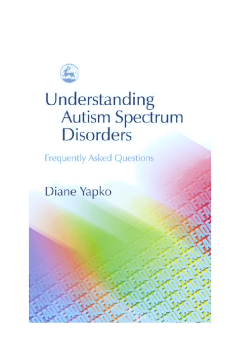
Additional Information
Book Details
Abstract
This informative and easy to read book is an essential resource for parents, teachers, those new to the field, and people on the autism spectrum themselves. Diane Yapko, who has worked with individuals with Autism Spectrum Disorders and their families for over 20 years, brings together diverse information about the latest 'scientific break throughs', current developmental theories, and practical interventions around ASD. Her use of an accessible question and answer format enables her to address precisely those issues that are of most concern to people seeking introductory guidance or the information on the latest developments, and directions for further research.
The book is organized into four main parts: diagnosis and characteristics; causes; medical issues; and treatments, intervention programs and approaches. The book's final part includes a useful listing of further resources.
In an ever growing area of research, the nature of autistic spectrum disorders (ASD) continues to raise more questions than answers. This book details the most commonly asked questions and attempts to answer them in a clear, up-to-date way. Divided into five sections covering diagnosis, causes, medical issues, treatment approaches and resources, the question and answer format provides information in bite-size chunks making this an easy book to pick up and put down as and when needed.
youthinmind.net
Essential resource for parents, teachers, those new to the field, and people on the autism spectrum themselves. Brings together diverse information about scientific breakthroughs, developmental theories, and practical interventions around Autism Spectrum Disorder.
The Human Condition Bookstore
Diane Yapko MA is a licensed speech-language pathologist in private clinical practice in Solana Beach, California. She specializes in working with the paediatric population in the area of Autism Spectrum Disorders as well as other developmental disorders affecting speech, language, social skills, learning and behavior.
Reading the book from cover to cover, I found it gave a comprehensive overview of issues relating to ASD, but it would be even more useful to have available to dip into to answer specific queries e.g. What is executive function deficit? What role do allergies play in children with ASD? Are there specific interventions for temper tantrums? I would recommend this book to all parents and professionals, both those new to autism and those with existing knowledge, as an easy reference guide to ASD.
Autism West Midlands
